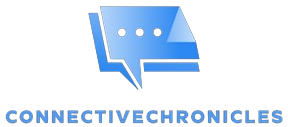Understanding Schema.org Structured Data
Schema.org structured data represents one of the most powerful yet underutilized aspects of modern web development and SEO strategy. This collaborative markup vocabulary, developed by major search engines including Google, Bing, Yahoo, and Yandex, provides a standardized way to describe content on web pages. When properly implemented, schema markup helps search engines understand the context and meaning of your content, potentially leading to enhanced search results through rich snippets, knowledge panels, and improved visibility.
The extraction of schema.org data from websites has become an essential skill for SEO professionals, developers, and digital marketers who need to analyze competitor strategies, audit their own implementations, or gather structured data for various applications. Understanding how to efficiently extract this valuable information can provide significant competitive advantages and insights into industry best practices.
Types of Schema.org Markup Formats
Before diving into extraction methods, it’s crucial to understand the three primary formats used to implement schema.org markup on websites. Each format presents unique challenges and opportunities when it comes to data extraction.
JSON-LD (JavaScript Object Notation for Linked Data)
JSON-LD has emerged as the preferred format for implementing structured data, particularly favored by Google. This format embeds structured data within script tags, making it relatively easy to locate and extract. The self-contained nature of JSON-LD means that the structured data exists independently of the HTML content, simplifying both implementation and extraction processes.
Microdata
Microdata integrates structured data directly into HTML elements using specific attributes such as itemscope, itemtype, and itemprop. While this format provides semantic meaning to visible content, extracting microdata requires more sophisticated parsing techniques as the data is distributed throughout the HTML structure.
RDFa (Resource Description Framework in Attributes)
RDFa represents the most complex format for schema implementation, utilizing attributes like typeof, property, and resource within HTML elements. Although less common than JSON-LD and microdata, RDFa still appears on many websites, particularly those using content management systems that automatically generate this markup.
Manual Extraction Methods
For beginners and those working with small-scale projects, manual extraction methods provide an excellent starting point for understanding schema.org data structure and implementation patterns.
Browser Developer Tools
Modern web browsers offer powerful developer tools that can help identify and extract structured data. By opening the browser’s developer console and navigating to the Elements or Inspector tab, you can search for specific schema-related terms such as \”application/ld+json\” for JSON-LD markup or \”itemscope\” for microdata implementations.
The process involves right-clicking on a webpage, selecting \”Inspect Element,\” and then using the search functionality (Ctrl+F or Cmd+F) to locate schema markup. This method works particularly well for JSON-LD extraction, as the structured data typically appears in clearly defined script blocks.
View Source Analysis
Examining the raw HTML source code provides another straightforward approach to schema extraction. By viewing the page source (typically accessible through Ctrl+U or Cmd+U), you can manually search for schema-related markup and copy the relevant code sections for analysis.
Automated Extraction Tools and Techniques
As projects scale and the need for systematic data extraction grows, automated tools and programming techniques become essential for efficient schema.org data harvesting.
Google’s Structured Data Testing Tool
Google provides a Structured Data Testing Tool that not only validates schema markup but also displays all structured data found on a given page. While primarily designed for validation purposes, this tool serves as an excellent resource for understanding how search engines interpret structured data implementations.
Schema Markup Validators
Several online validators can extract and display schema.org data from websites. These tools typically provide formatted output that makes it easy to understand the structure and content of the markup. Popular options include Schema.org’s own validator and various third-party tools that offer additional features such as bulk analysis and export capabilities.
Programming-Based Extraction Methods
For professional developers and large-scale data extraction projects, programming-based solutions offer the most flexibility and efficiency.
Python-Based Extraction
Python provides numerous libraries that excel at web scraping and data extraction. Beautiful Soup, combined with requests library, offers a powerful combination for parsing HTML and extracting structured data. For JSON-LD extraction, the process involves locating script tags with the appropriate type attribute and parsing the contained JSON data.
More advanced Python solutions might utilize libraries such as Scrapy for large-scale crawling operations or extruct for specialized structured data extraction. These tools can handle complex websites with dynamic content and provide robust error handling for production environments.
JavaScript and Node.js Solutions
JavaScript-based extraction tools leverage the browser’s native JSON parsing capabilities and DOM manipulation functions. Node.js environments can utilize libraries such as Cheerio for server-side HTML parsing or Puppeteer for handling dynamic content that requires JavaScript execution.
API-Based Extraction Services
Commercial and open-source APIs provide another avenue for schema.org data extraction. These services often handle the technical complexities of web scraping while providing clean, structured output formats. Many offer features such as rate limiting, proxy rotation, and automatic retry mechanisms that are essential for large-scale operations.
Advanced Extraction Strategies
Professional schema extraction often requires sophisticated approaches to handle complex websites and dynamic content.
Handling Dynamic Content
Modern websites frequently load structured data dynamically through JavaScript, making traditional HTML parsing insufficient. Headless browsers such as Chrome DevTools Protocol or Selenium WebDriver can execute JavaScript and capture the fully rendered page state, ensuring complete schema data extraction.
Dealing with Authentication and Access Controls
Some websites require authentication or implement access controls that complicate automated extraction. Professional solutions must account for login procedures, session management, and respect for robots.txt files and rate limiting policies.
Data Processing and Analysis
Raw schema extraction represents only the first step in a comprehensive data analysis workflow. Effective processing involves normalizing data formats, validating schema compliance, and organizing information for meaningful analysis.
Data Normalization
Different websites may implement the same schema types with varying levels of detail and accuracy. Normalization processes help standardize extracted data, making it suitable for comparative analysis and integration with other data sources.
Validation and Quality Assessment
Extracted schema data should undergo validation to ensure compliance with schema.org specifications. This process helps identify implementation errors, incomplete markup, and opportunities for improvement in your own schema implementations.
Best Practices and Ethical Considerations
Responsible schema extraction requires adherence to best practices and ethical guidelines that respect website owners’ rights and server resources.
Respecting Rate Limits
Automated extraction should implement appropriate delays between requests to avoid overwhelming target servers. Professional crawling operations typically implement exponential backoff strategies and respect server response codes that indicate resource limitations.
Legal and Ethical Compliance
Schema extraction activities must comply with applicable laws, terms of service, and ethical standards. This includes respecting robots.txt files, avoiding extraction of personal or sensitive information, and ensuring that extracted data is used for legitimate purposes such as research, analysis, or competitive intelligence.
Common Challenges and Solutions
Schema extraction projects often encounter technical and practical challenges that require creative solutions and robust error handling.
Inconsistent Implementation Patterns
Websites may implement schema markup inconsistently, using different formats or incomplete data structures. Effective extraction tools must be flexible enough to handle these variations while providing meaningful feedback about data quality and completeness.
Performance and Scalability
Large-scale extraction operations require careful attention to performance optimization and scalability. This includes efficient memory management, parallel processing capabilities, and distributed architectures for handling high-volume extraction requirements.
Future Trends and Developments
The landscape of structured data and schema extraction continues evolving with new technologies and changing search engine requirements. Understanding these trends helps professionals prepare for future challenges and opportunities.
Machine Learning Integration
Advanced extraction systems increasingly incorporate machine learning techniques to improve accuracy and handle complex content structures. These systems can learn from extraction patterns and adapt to new schema implementations automatically.
Real-Time Processing
The demand for real-time schema monitoring and extraction drives development of streaming processing solutions that can detect and extract structured data changes as they occur.
Mastering schema.org data extraction opens doors to deeper understanding of structured data implementations, competitive analysis opportunities, and improved SEO strategies. Whether using manual methods for small projects or implementing sophisticated automated solutions for enterprise applications, the ability to effectively extract and analyze schema markup represents a valuable skill in today’s data-driven digital landscape. Success in this field requires combining technical expertise with respect for ethical guidelines and best practices that ensure sustainable and responsible data extraction practices.

